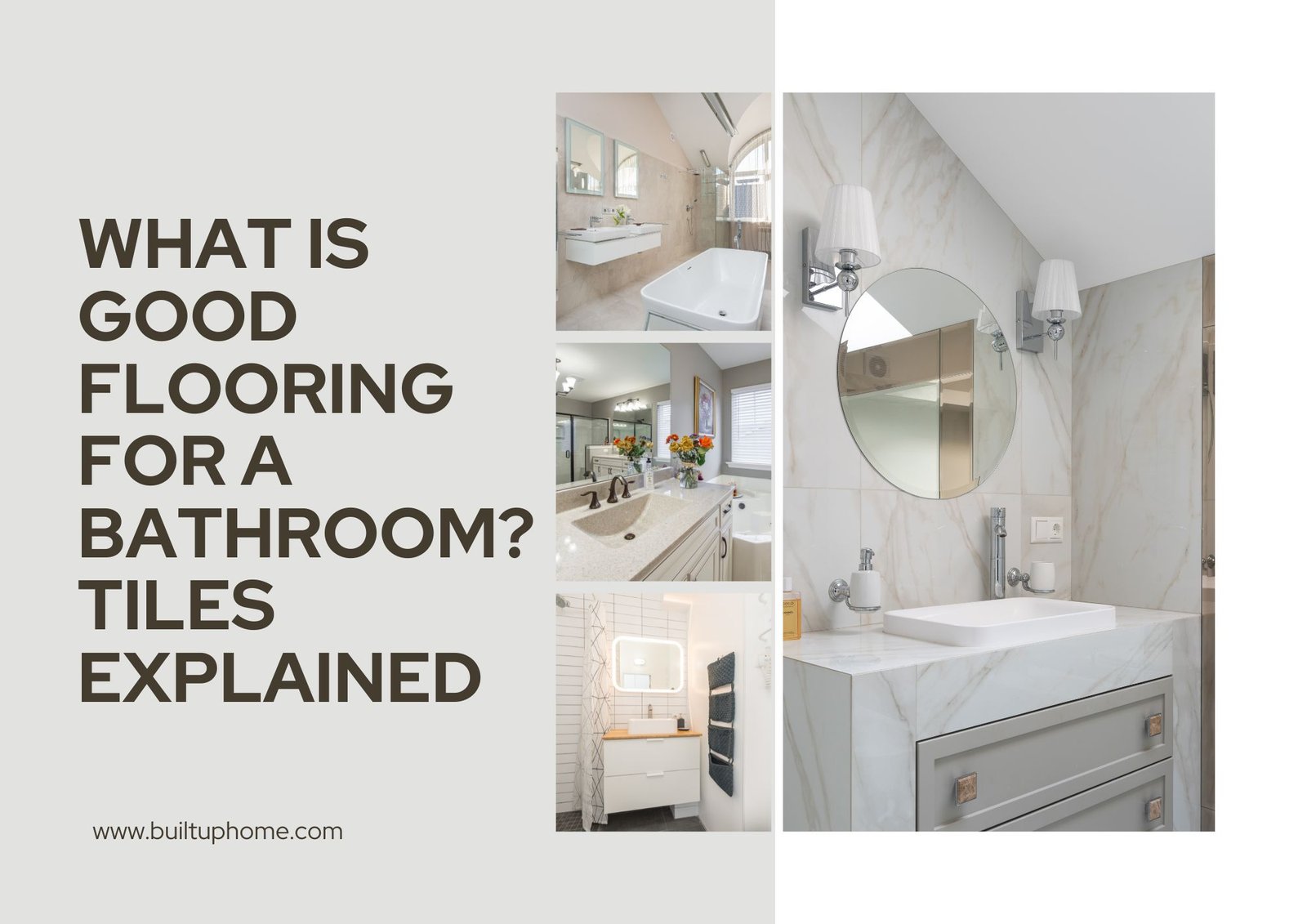When it comes to bathroom design, one of the most important decisions you’ll make is the type of flooring. Bathrooms are high-moisture areas, which means your flooring needs to be water-resistant, durable, and safe—while still looking great. Among the many options available, tile flooring consistently ranks as one of the best choices. But with so many types, styles, and finishes available, how do you know which tile is right for your bathroom?
Let’s break down everything you need to know about bathroom tile flooring, from the types available to key features and expert tips.
Why Tile is Ideal for Bathroom Flooring
Tiles are a popular choice for bathrooms because they meet the three major requirements of this space:
- Water Resistance: Bathrooms experience a lot of splashes, spills, and moisture.. Tiles, especially glazed ones, offer excellent water resistance.
- Durability: With appropriate upkeep, tiles can endure for decades and are durable against wear and tear.
- Style Variety: Whether you prefer a sleek modern look or a cozy rustic vibe, there’s a tile to match your taste.
Best Tile Options for Bathroom Flooring
1. Porcelain Tiles
Pros:
- Highly water-resistant (more than ceramic)
- Extremely durable and hardwearing
- Offered in various styles, such as stone and wood appearances
Cons:
- Can be cold and hard underfoot without underfloor heating
- Requires a bit more effort to cut and install
Porcelain tiles are considered one of the best options for bathroom floors due to their low water absorption rate and versatility in design.
2. Ceramic Tiles
Pros:
- Water-resistant and easy to maintain
- Softer and easier to cut than porcelain
- Budget-friendly
Cons:
- It is slightly more porous than porcelain (choose glazed options)
- Less durable in heavy-traffic bathrooms
Ceramic tiles are a great option for powder rooms or smaller bathrooms with less foot traffic.
3. Natural Stone Tiles (e.g., Marble, Slate, Travertine)
Pros:
- Luxurious, timeless appearance
- Unique natural variations in texture and color
Cons:
- Expensive and requires sealing
- Can be slippery when wet unless textured
Stone tiles can elevate your bathroom’s aesthetic, but they require regular maintenance to stay protected from moisture damage.
4. Vinyl Tiles (Luxury Vinyl Tile – LVT)
Pros:
- Water-resistant or waterproof
- Softer and warmer underfoot than ceramic/porcelain
- Affordable and easy to install
Cons:
- May not add as much value to your home as stone or porcelain
- Can be less durable over the long term
LVT is a popular choice for homeowners wanting the look of tile with added comfort and ease of installation.
Key Features to Look for in Bathroom Tiles
When shopping for tile flooring, keep these characteristics in mind:
- Slip Resistance: Look for tiles with a matte or textured surface, or those specifically rated for wet areas.
- Water Absorption Rate: Porcelain tiles have the lowest water absorption rate (<0.5%), making them ideal for wet areas.
- PEI Rating: The Porcelain Enamel Institute (PEI) rating measures tile hardness. For bathroom floors, look for a rating of at least 3 or higher.
- Grout and Sealant: Use waterproof grout and consider sealing tiles and grout lines to prevent water intrusion and mold growth.
Design Tips for Choosing Bathroom Tiles
- Go Light for Small Bathrooms: Light-colored tiles can make a compact bathroom feel more spacious and airy.
- Mix and Match: Use smaller, mosaic-style tiles on shower floors and larger tiles on the main floor for visual interest and better drainage.
- Warm It Up: Consider adding radiant floor heating under your tiles for comfort during cold months.
- Create a Spa-Like Feel: Use natural stone or stone-look porcelain in soft, neutral tones for a calming atmosphere.
Installation Considerations
- Always ensure the subfloor is properly prepared before tile installation to prevent cracking.
- Hiring a professional tile installer can ensure waterproofing systems like membranes or underlayment are correctly installed, especially in walk-in showers and wet rooms.
- Proper slope in shower floors is crucial to avoid standing water.
Conclusion
When it comes to choosing good flooring for your bathroom, tiles offer the perfect balance of practicality and style. Whether you opt for budget-friendly ceramic, ultra-durable porcelain, or the natural beauty of stone, there’s a tile out there that fits your bathroom’s needs and your personal taste.
Remember to consider not just aesthetics, but also durability, safety, and maintenance when making your selection. With the right tile, your bathroom can be both a functional and beautiful retreat for years to come.
Read More Detailed About: Built-UP home
How Can I Design My Living Room?

